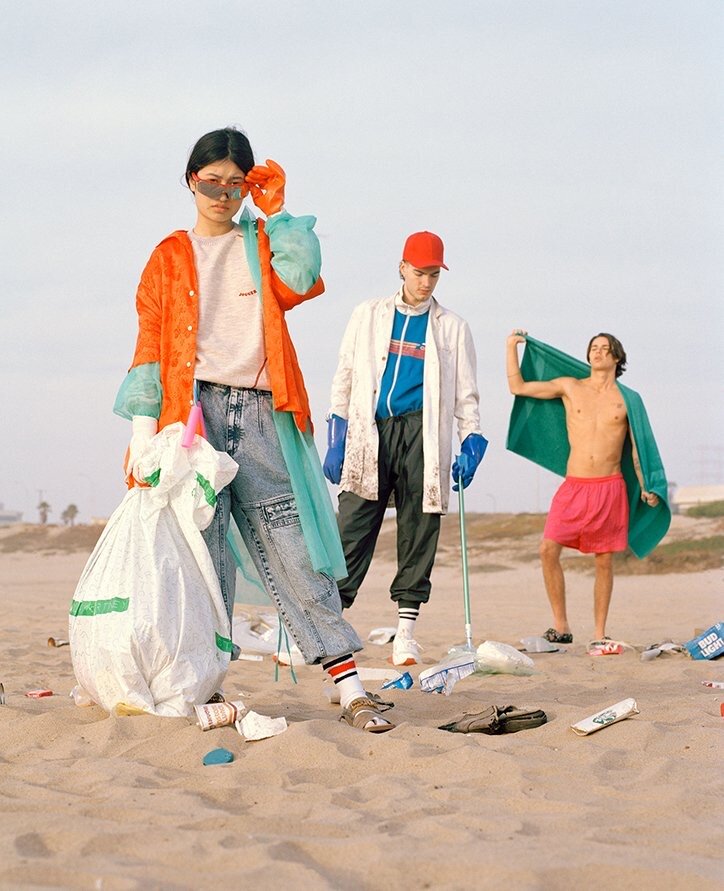
The Human Cost of £3 Dresses: Uncovering the ‘Dark Factories’ Hidden Behind ‘Gram-Worthy Glam’.
By Isabel Hambly
There are few people that could say they wouldn’t be seduced by a £3 Dress. It’s cute, bang on trend, and costs the same as a meal deal? Don’t mind if I do. However disguised underneath the allure of that pretty-little-bargain are the hands of real people, begging the question- what is the human cost of rock-bottom prices?
Ovidiu Hrubaru / Shutterstock.com
Fashion provides a fantasy that people can buy into, creating a mystery behind the garments that consumers rarely look beyond. The allure of that ‘killer’ dress would soon falter if the conditions in which it was made were revealed. The polished garment, professionally packaged and delivered to your door, leaves no trace of human involvement. Allowing you to detach the item of clothing from its production process, remaining in the safe realm of smoke and mirrors.
However, the horror surrounding some of the worst practices in garment manufacture has been available to the public for nearly two decades. Blood, Sweat and T-Shirts, aired in 2008, educated consumers on the manufacture of clothes in factories and back-street workshops in India. This was followed, tragically in 2013, by the Rana Plaza factory collapse in Bangladesh, killing 1,138 people. Fashion Revolution was started after this disaster, imploring consumers to ask brands #whomademyclothes.
So why do we still buy these garments, and invest in brands exposed of having slavery and dangerous working conditions in their supply chain? The answer could be because of an out-of-sight-out-of-mind attitude. With the production of garments moved to low-cost countries, the exploitation of workers is not on our doorstep, shifting the blame across seas together with the manufacture.
“Nevertheless, do not be fooled into thinking these garments are made by jolly workers enjoying a cup of Earl Grey.”
Coveted ‘Made in England’ labels may be sought out by more conscious consumers. Nevertheless, do not be fooled into thinking these garments are made by jolly workers enjoying a cup of Earl Grey. A £3 dress, made in Leicester, sees some factory workers in the same appalling conditions as in some low-cost countries. The phrase ‘Dark Factories’ has been coined to describe the abhorrent surroundings some people work in, for well below the minimum wage (in some cases just £3 an hour). For example, fire safety hazards, exploitation of illegal immigrants, no Trade Unions, holiday or sick pay.
Channel 4, in their Dispatches documentary on ‘Dark Factories’ in England, named Boohoo, Missguided, New Look and River Island as the main culprits. Although these brands audit their factories, subcontracting as well as under-recorded hours lead to the mistreatment of workers.
AL Robinson / Shutterstock.com
However, the blame remains with the brands, for playing the factories off against one another, undercutting each other to win custom. With the brands demanding unrealistic prices for garment manufacture, it is impossible for the factories to operate ethically. Professor Nikolaus Hammer of Leicester University says the brands “will go to the manufacturer and say that person down the road can do it for 1p less, and they get the job”.
Fault also lies with the government, who recognises the problem, describing it as a “perceived culture of impunity” (exempt from consequences/punishment), and yet have failed to improve the working conditions 2 years after a report in 2018.
And so, with the government complacent, and brands such as Boohoo still boasting cut prices, I implore you to start voting with your feet. If we were to all start seeing beyond the excitement of slashed prices, asking more questions about the viability of the £3 dress, brands would not be able to continue exploiting people throughout their supply chain.
Consumers are beginning to wake up to the reality of ‘Dark Factories’ and I hope that more enlightened customers will be on the right side of history.
Related Articles.
Fashion’s Unsustainable Behaviour.
Dr Alana M James, a Senior Lecturer in Fashion at Northumbria University, allows provides an insight into the Fashion Industry’s many dirty habits and gives us an invaluable history lesson on how it got to this point.
Sustainability | By Dr Alana M James | 07.15.20
Fashion’s Impact on our Oceans.
How does clothing pollute the Oceans? And what are some small changes we can make to have a positive impact as consumers, fashion industry professionals and brands.
Sustainability | By Emma Golley | 06.08.20
Why I Walked Away From My Career In Fashion.
The story of a highly talented individual with incredible potential, who was turned off the industry entirely due to the actions of a single colleague.
Stories | By Anonymous | 05.12.20






